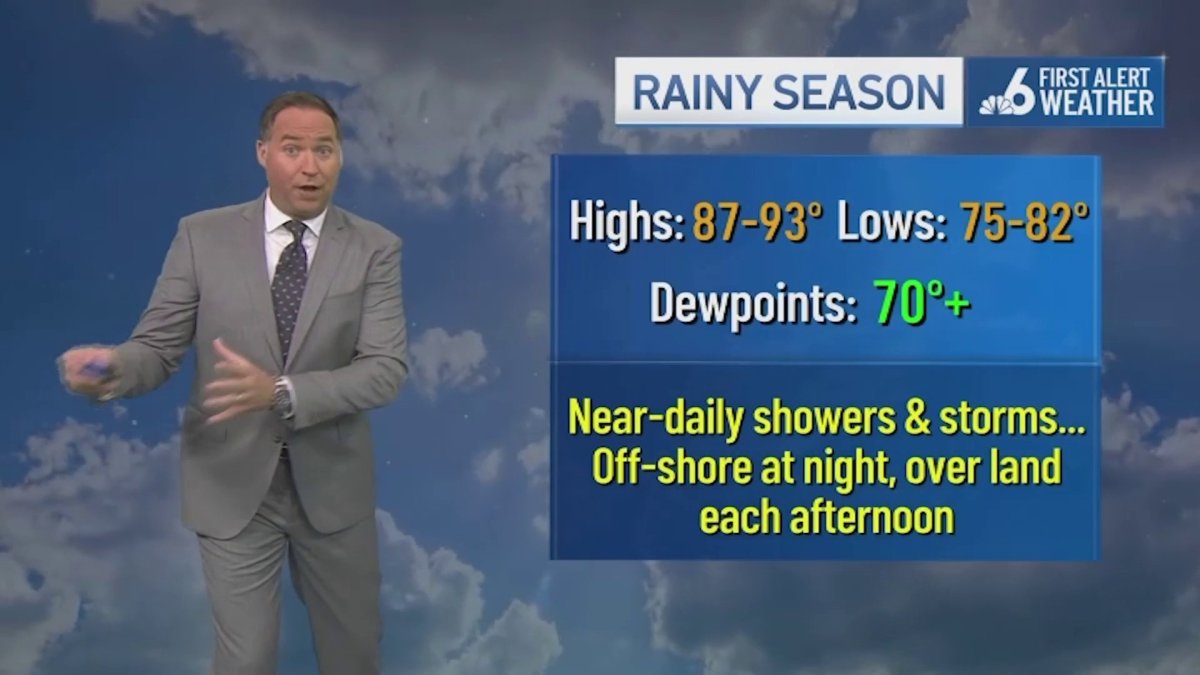
With the 2023 rainy season beginning on May 15, there are a few things South Florida residents should expect. NBC6 First Alert Meteorologist Ryan Phillips breaks down the details.
If you've ever lived in South Florida, you know there are two main seasons: hurricane season and rainy season.
Rainy season officially kicks off Monday and while you think you may know what to expect, here is everything you should know about this time of year and how to stay safe.
When does rainy season begin?
Like hurricane season, rainy season is bookended. It begins Monday, May 15 and ends Sunday, October 15.
Get South Florida local news, weather forecasts and entertainment stories to your inbox. Sign up for NBC South Florida newsletters.
While it may seem that the dates are set in stone, they are quite subjective. In fact, the pattern may even be delayed from year to year. Come May 15, you may see rain, or it might take a few days for the showers to come through.
The setting of a beginning and an end to the rainy season is more for messaging. The goal for setting dates is to capture an approximate timeframe for producing daily showers and thunderstorms.
How many inches could fall during rainy season?
Local
Rainy season accounts for 70% of our yearly rainfall.
That could mean up to 45 inches for Miami and 37 inches in Fort Lauderdale.
What weather conditions need to be in place for rainy season?
Typically highs will be between 87° and 93° and lows will be between 75° and 82°.
Dew point, the temperature that generally measures the moisture in the atmosphere, will be at 70° or higher so we're looking at very stuffy humid air.
What is the best and worst times in rainy season?
Mid-May to early July is generally the worst and stormiest phase of rainy season.
You can see day after day of wet weather and it is usually when there is the possibility of severe storms in South Florida.
Early July to mid-August is the best time.
It is typically the hotter phase where you can experience some dry periods. Why? We get stronger easterly breezes across the area, and Saharan air which suppresses tropical activity across the Atlantic basin.
The end of rainy season, from late August to mid-October, is the most highly variable phase due to the influence of tropical systems and cold fronts.
This may result in a ton of rain toward the backend of the season.